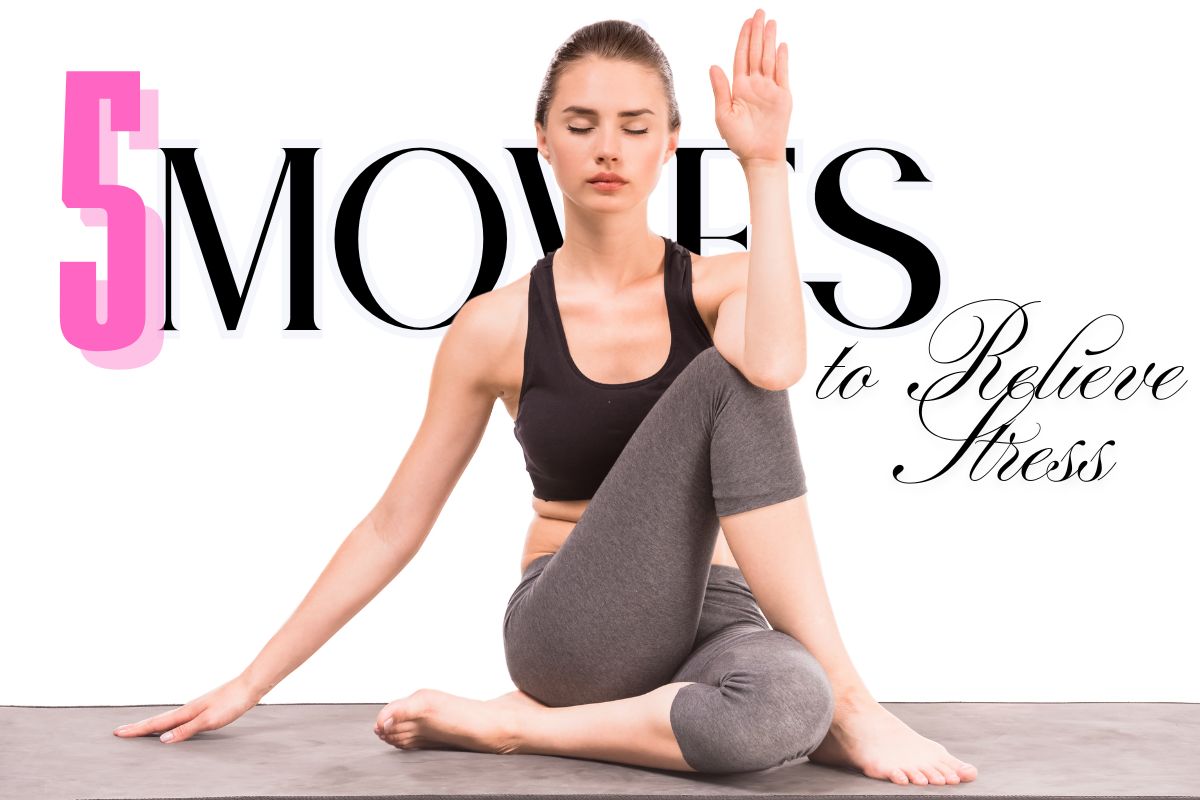Stress doesn’t always make a loud entrance. Sometimes it shows up as a sore back, a stiff neck, or that sinking feeling in the pit of your stomach. Maybe the day hasn’t even gone wrong yet—but the brain’s already spinning. That’s when a few small, grounding moves can make a world of difference.
These aren’t exercises in the usual sense. Think of them more like little resets. They help shift the body out of “tense and buzzing” and into “alright, I’ve got this.”
Neck Rolls

It’s easy to forget how much tension lives in the neck—until it starts aching. Long hours at a desk, scrolling on the phone, or even just holding in frustration can cause a slow build-up.
Here’s what helps:
- Sit or stand with a relaxed spine.
- Let the chin drop gently to the chest.
- Roll the head slowly in a circle—right, back, left, front.
- Keep the movement slow and smooth.
- After a few rolls, reverse direction.
Picture someone taking a quiet moment at the kitchen counter, rolling their neck as the kettle boils. No equipment, no fanfare. Just 30 seconds of letting go.
Shoulder Rolls and Shrugs

Shoulders often act like the body’s emotional coat hooks—they catch everything. They rise up in stress and hunch forward without permission.
How to reset them:
- Lift both shoulders up high, like a slow shrug.
- Hold briefly, then drop them fast.
- Do this about 8–10 times.
- Then roll them forward 5 times and back 5.
Imagine someone coming out of a long meeting, feeling wired and wound-up. A few shoulder rolls on the walk back to their desk, and suddenly they’re breathing easier.
Read Also: Prince Harry’s Latest Move: Invites Royals Back to UK Event
Cat-Cow Stretch

The spine takes on a lot. This stretch brings movement back to that central pillar—perfect after a stiff day or a restless night.
How to give the back some love:
- Get onto all fours—hands under shoulders, knees under hips.
- Inhale, lift the chest and tailbone gently (cow).
- Exhale, round the spine and tuck the chin (cat).
- Move back and forth with the breath for a minute or two.
This one suits early mornings before the house wakes up or winding down late at night. It doesn’t require flexibility—just a bit of space and a slow rhythm.
Forward Fold

Sometimes the mind needs to drop low before it can lift again. A forward fold lets gravity do the work and gives everything a short break.
Here’s how to settle into it:
- Stand with feet hip-width apart.
- Bend the knees slightly.
- Fold forward from the hips and let the arms hang.
- The head should feel heavy, not held up.
- Stay for 20–30 seconds. Breathe slowly.
Think of someone stepping away after a tough phone call, folding forward in a quiet hallway. It’s a full stop—a small one, but enough to stop thoughts from snowballing.
Read Also: A Simple 7-Day Vegetarian Meal Plan Anyone Can Try
Legs Up the Wall

This one’s oddly comforting. It calms the heart rate, helps tired legs, and creates space for stillness. It feels like pressing pause in the best way.
To get into position:
- Lie on the floor near a wall.
- Swing the legs up so they’re resting against it.
- Let arms fall to the sides.
- Close your eyes if it feels right.
- Stay there for 3–5 minutes.
It’s something that works just as well after a long day in a retail shop as it does after standing in the kitchen for hours. Some even turn it into a nightly ritual before bed.
When These Moves Fit In
They’re not tied to a strict schedule. They’re not part of some perfect routine. These movements fit into life the way tea fits into a rainy afternoon—naturally and without too much thought.
For example:
- A nurse on break between shifts might do shoulder rolls in the corridor.
- A student, minutes before an exam, could try a forward fold outside the building.
- A parent sneaking a few moments of calm might lie back and put their legs up against the sofa.
None of these takes more than a couple of minutes, but they can change the feel of the entire day.
Why They’re Worth Trying
These aren’t flashy fixes. They won’t erase the source of stress, but they give the body a different message—you’re safe, you’re here, you can slow down now.
They don’t need timers, mats, or perfect technique. What they do need is permission to stop, even briefly, and take care of themselves in the most basic way.
And that’s what makes them work. Not because they’re “part of a routine,” but because they meet the body where it is—stressed, tired, wired—and offer a way to feel a little more okay.
Conclusion
Stress isn’t always loud or dramatic. It can slip in quietly—through clenched jaws, tired shoulders, or that uneasy feeling that something’s just… off. But that doesn’t mean it has to stay.
These five simple moves won’t fix everything, but they give the body a way to let go—even if only for a minute or two. Whether it’s a quick neck roll between emails, a forward fold before bed, or legs up the wall after a long day, each one offers a small, steady reminder: it’s okay to slow down.
There’s no need for a perfect routine or a full hour set aside. These movements are there when needed, whenever the day feels too fast, too heavy, or too much. Sometimes, the most powerful shift comes from the quietest action.






